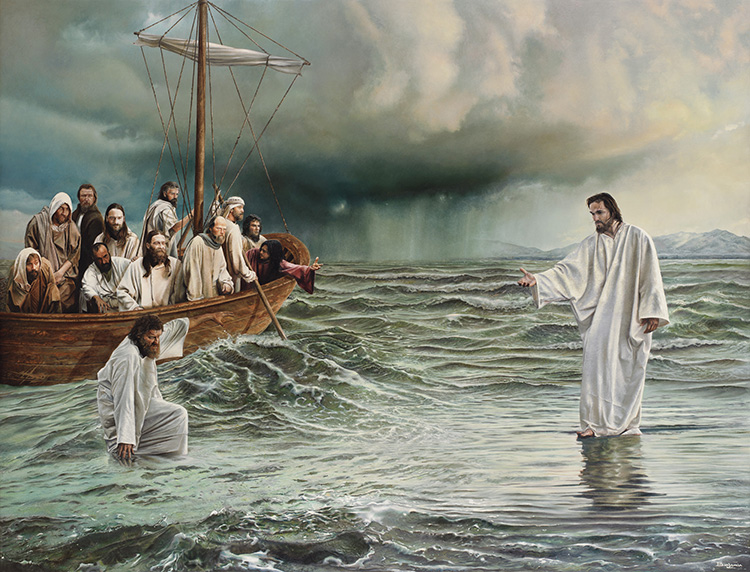Is not this evident? Nuah is Noah, floating on the waters, in his ark; the latter being the emblem of the argha, or moon, the feminine principle; Noah is the “spirit” falling into matter. We find him as soon as he descends upon the earth, planting a vineyard, drinking of the wine, and getting drunk on it; i.e., the pure spirit becoming intoxicated as soon as it is finally imprisoned in matter. The seventh chapter of Genesis is but another version of the first. Thus, while the latter reads: ” . . . and darkness was upon the face of the deep. And the spirit (of God) moved upon the face of the waters,” in chapter seventh, it is said: ” . . . and the waters prevailed . . . and the ark went (with Noah — the spirit) upon the face of the waters.” Thus Noah, if the Chaldean Nuah, is the spirit vivifying matter, chaos represented by the
Page 424
deep or waters of the flood. In the Babylonian legend it is Istar (Astoreth, the moon) which is shut up in the ark, and sends out a dove (emblem of Venus and other lunar goddesses) in search of dry land. And whereas in the Semitic tablets it is Xisuthrus or Hasisadra who is “translated to the company of the gods for his piety,” in the Bible it is Enoch who walks with, and being taken up by God, “was no more.”
The successive existence of an incalculable number of worlds before the subsequent evolution of our own, was believed and taught by all the ancient peoples. The punishment of the Christians for despoiling the Jews of their records and refusing the true key to them began from the earliest centuries. And thus is it that we find the holy Fathers of the Church laboring through an impossible chronology and the absurdities of literal interpretation, while the learned rabbis were perfectly aware of the real significance of their allegories. So not only in the Sohar, but also in other kabalistic works accepted by Talmudists, such as Midrash Berasheth, or the universal Genesis, which, with the Merkaba (the chariot of Ezekiel), composes the Kabala, may be found the doctrine of a whole series of worlds evolving out of the chaos, and being destroyed in succession.
The Hindu doctrines teach of two Pralayas or dissolutions; one universal, the Maha-Pralaya, the other partial, or the minor Pralaya. This does not relate to the universal dissolution which occurs at the end of every “Day of Brahma,” but to the geological cataclysms at the end of every minor cycle of our globe. This historical and purely local deluge of Central Asia, the traditions of which can be traced in every country, and which, according to Bunsen, happened about the year 10,000 B.C., had naught to do with the mythical Noah, or Nuah. A partial cataclysm occurs at the close of every “age” of the world, they say, which does not destroy the latter, but only changes its general appearance. New races of men and animals and a new flora evolve from the dissolution of the precedent ones.
The allegories of the “fall of man” and the “deluge,” are the two most important features of the Pentateuch. They are, so to say, the Alpha and Omega, the highest and the lowest keys of the scale of harmony on which resounds the majestic hymns of the creation of mankind; for they discover to him who questions the Zura (figurative Gematria), the process of man’s evolution from the highest spiritual entity unto the lowest physical — the post-diluvian man, as in the Egyptian hieroglyphics, every sign of the picture writing which cannot be made to fit within a certain circumscribed geometrical figure may be rejected as only intended by the sacred hierogrammatist for a premeditated blind — so many of the details in the Bible must be treated on the same principle, that por-
Page 425
tion only being accepted which answers to the numerical methods taught in the Kabala.
The deluge appears in the Hindu books only as a tradition. It claims no sacred character, and we find it but in the Mahabharata, the Puranas, and still earlier in the Satapatha, one of the latest Brahmanas. It is more than probable that Moses, or whoever wrote for him, used these accounts as the basis of his own purposely disfigured allegory, adding to it moreover the Chaldean Berosian narrative. In Mahabharata, we recognize Nimrod under the name of King Daytha. The origin of the Grecian fable of the Titans scaling Olympus, and the other of the builders of the Tower of Babel who seek to reach heaven, is shown in the impious Daytha, who sends imprecations against heaven’s thunder, and threatens to conquer heaven itself with his mighty warriors, thereby bringing upon humanity the wrath of Brahma. “The Lord then resolved,” says the text, “to chastise his creatures with a terrible punishment which should serve as a warning to survivors, and to their descendants.”

Moe is the founder of GnosticWarrior.com. He is a father, husband, author, martial arts black belt, and an expert in Gnosticism, the occult, and esotericism.


![How the South Saxons received Eadbert and Eolla, and the West Saxons, Daniel and Aldhelm, for their bishops; and of the writings of the same Aldhelm [705 A.D.] | Book 5 | Chapter 17 How the South Saxons received Eadbert and Eolla, and the West Saxons, Daniel and Aldhelm, for their bishops; and of the writings of the same Aldhelm [705 A.D.] | Book 5 | Chapter 17](https://www.gnosticwarrior.com/wp-content/plugins/contextual-related-posts/default.png)


It really is disturbing that you invest all this time in ancient mysteries and “cracking the code” but you can not see what is right in front of you. The “Gnostics” have been in control of this planet for a very long time. What great freedoms have free masonry won you? What paradise has your “hidden hand” crafted? It is written that a good tree can not bear evil fruit nor a corrupt tree bear good fruit. What is the fruit of this world? War, hunger, poverty and genocide-these are the fruits of the “enlightened.” Your words are sweet but they turn bitter when consumed.